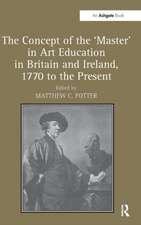Part-Architecture: The Maison de Verre, Duchamp, Domesticity and Desire in 1930s Paris
Autor Emma Cheatleen Limba Engleză Hardback – 19 aug 2016
Designed for politically progressive gynaecologist Dr Jean Dalsace and his avant-garde wife, Annie Dalsace, the Maison de Verre combines a family home with a gynaecology clinic into a ‘free-plan’ layout. Screened only by glass walls, the presence of the clinic in the home suggests an untold dialogue on 1930s sexuality. The text explores the Maison de Verre through another radical glass construction, the Large Glass, where Duchamp’s complex depiction of unconsummated sexual relations across the glass planes reveals his resistance to the marital conventions of 1920s Paris. This and other analyses of the Large Glass are used as a framework to examine the Maison de Verre as a register of the changing history of women’s domestic and maternal choices, reclaiming the building as a piece of female social architectural history.
The process used to uncover and write the accounts in the book is termed ‘part-architecture’. Derived from psychoanalytic theory, part-architecture fuses analytical, descriptive and creative processes, to produce a unique social and architectural critique. Identifying three essential materials to the Large Glass, the book has three main chapters: ‘Glass’, ‘Dust’ and ‘Air’. Combining theory text, creative writing and drawing, each traces the history and meaning of the material and its contribution to the spaces and sexuality of the Large Glass and the Maison de Verre. As a whole, the book contributes important and unique spatial readings to existing scholarship and expands definitions of architectural design and history.
Preț: 882.49 lei
Preț vechi: 1182.22 lei
-25% Nou
Puncte Express: 1324
Preț estimativ în valută:
168.92€ • 183.54$ • 141.98£
168.92€ • 183.54$ • 141.98£
Carte tipărită la comandă
Livrare economică 21 aprilie-05 mai
Preluare comenzi: 021 569.72.76
Specificații
ISBN-13: 9781472471697
ISBN-10: 1472471695
Pagini: 256
Ilustrații: 96
Dimensiuni: 174 x 246 x 20 mm
Greutate: 0.84 kg
Ediția:1
Editura: Taylor & Francis
Colecția Routledge
Locul publicării:Oxford, United Kingdom
ISBN-10: 1472471695
Pagini: 256
Ilustrații: 96
Dimensiuni: 174 x 246 x 20 mm
Greutate: 0.84 kg
Ediția:1
Editura: Taylor & Francis
Colecția Routledge
Locul publicării:Oxford, United Kingdom
Cuprins
Prologue, 1. Introduction, Part I, 2. Histories: the Maison de Verre through the Large Glass, 3. Theories: part-object, part-architecture, Part II, 4. Glass, 5. Dust, 6. Air, Coda
Notă biografică
Emma Cheatle is Postdoctoral Research Fellow at Newcastle University Humanities Research Institute and dissertation tutor at Bartlett School of Architecture, UCL.
Recenzii
Emma Cheatle’s inspiring book is a must-read for any historian of twentieth-century modernism. Drawing on a vast range of materials, Cheatle argues that Marcel Duchamp’s Large Glass (1923) and Pierre Chareau's Maison de Verre (1932) are two key representations of early twentieth century sexual culture that can productively be read against each other. The insistence that Maison de Verre be understood within the context of contemporary struggles over sexual and reproductive rights for women is a ground-breaking one. More broadly, Cheatle's concept of 'part-architecture' itself sets out a mode of working that can go beyond the limits of the textual record, using the building’s materiality and creative sited practices to offer new interpretations and speculative insights for architectural history and design thinking.
Barbara Penner, Bartlett School of Architecture, UCL
Barbara Penner, Bartlett School of Architecture, UCL
Descriere
Part-Architecture presents a detailed and original study of Pierre Chareau’s Maison de Verre through another seminal modernist artwork, Marcel Duchamp’s Large Glass. Aligning the two works materially, historically and conceptually, the book challenges the accepted architectural descriptions of the Maison de Verre, makes original spatial and social accounts of its inhabitation in 1930s Paris, and presents new architectural readings of the Large Glass.






















